Abstract
Large quantities of fluid administered through an intestinal tube caused alterations in small bowel bacteriology in four of seven subjects. In two normal individuals, colonic bacteria were found after fluid infusion in areas of the small bowel which previously had none. The faecal microflora was also altered by the fluid purge: anaerobes were reduced in some subjects and large numbers of Enterobacter species emerged in others.
In a patient with pancreatic insufficiency and diarrhoea, the concentration of Enterobacter in the faeces was directly related to the number of bowel motions per day. Treatment with pancreatic enzymes curtailed the diarrhoea and markedly reduced these organisms. Intubation showed that Enterobacter were harboured in the small intestine and suppressed in the large bowel during periods of normal bowel action. Diarrhoea caused by pancreatic enzyme withdrawal or fluid purgation removed the colonic inhibition and allowed these organisms to appear in the faeces.
Acidic diarrhoea induced by lactose feeding to three hypolactasic patients caused reductions in the numbers of E. coli in the stool but increases in Enterobacter species. Bacteroides also declined in one subject.
Certain alterations in small and large bowel bacteriology observed in these forms of experimental diarrhoea have also been described in naturally occurring diarrhoea of diverse aetiologies.
Full text
PDF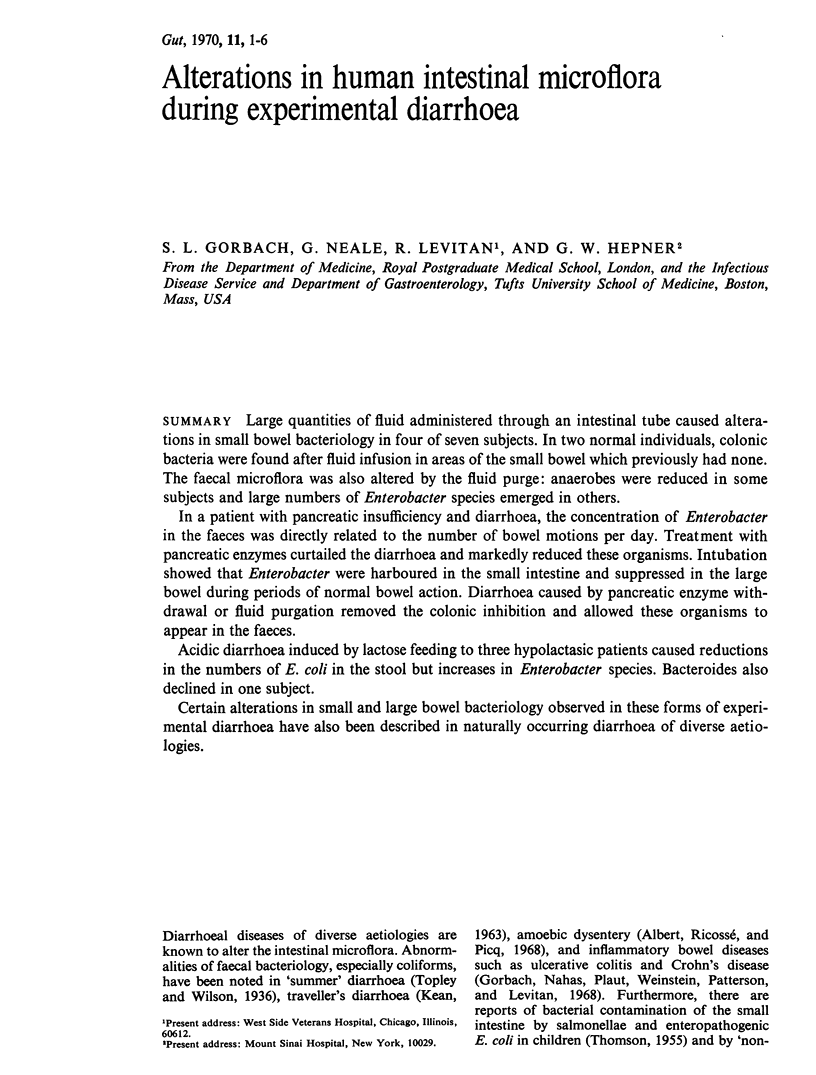
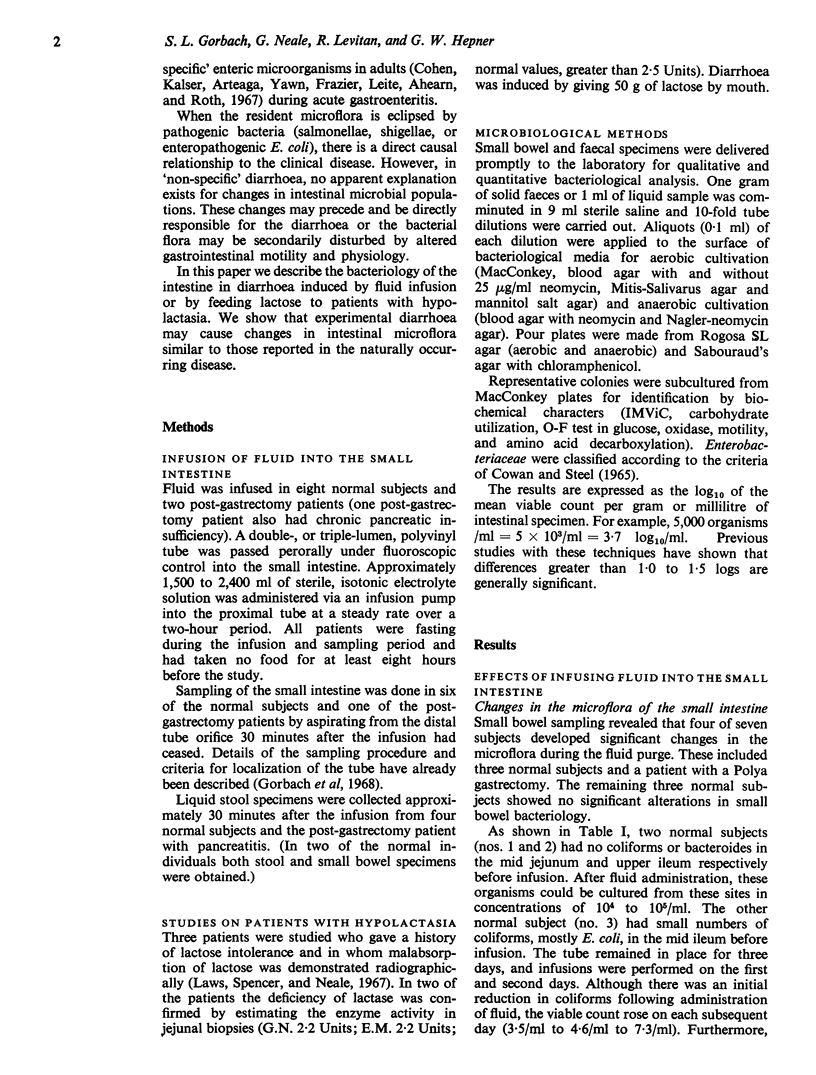
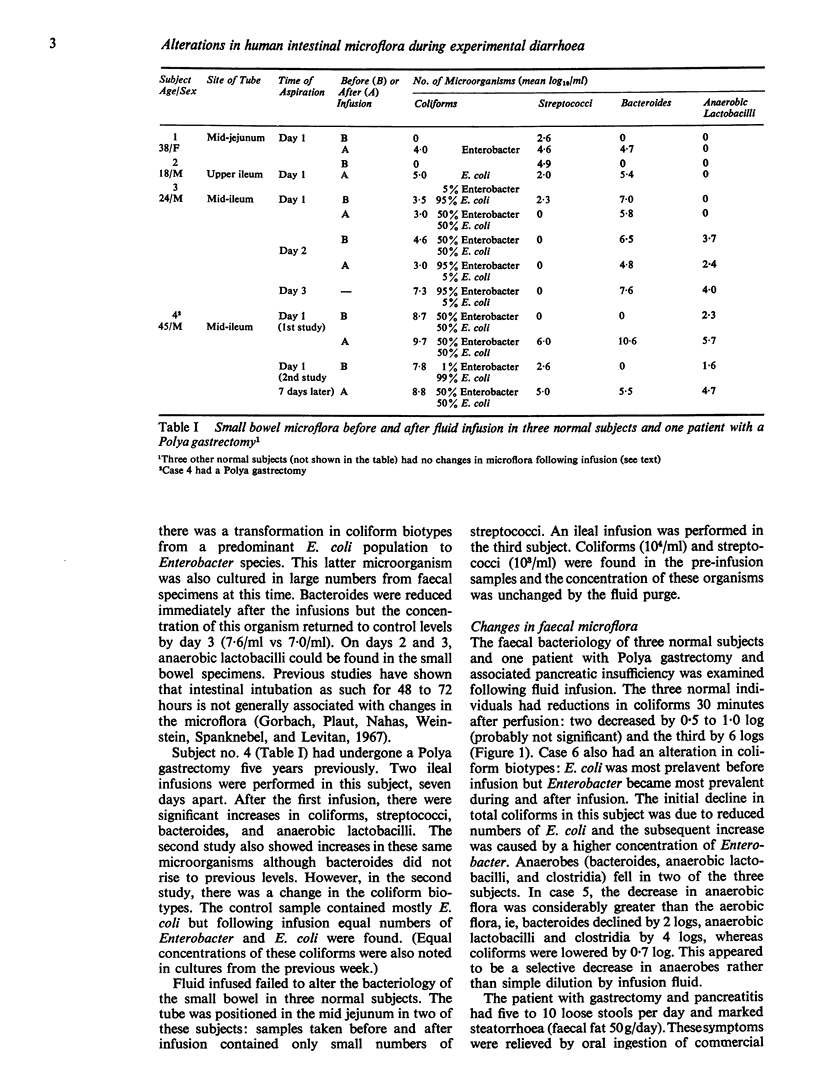
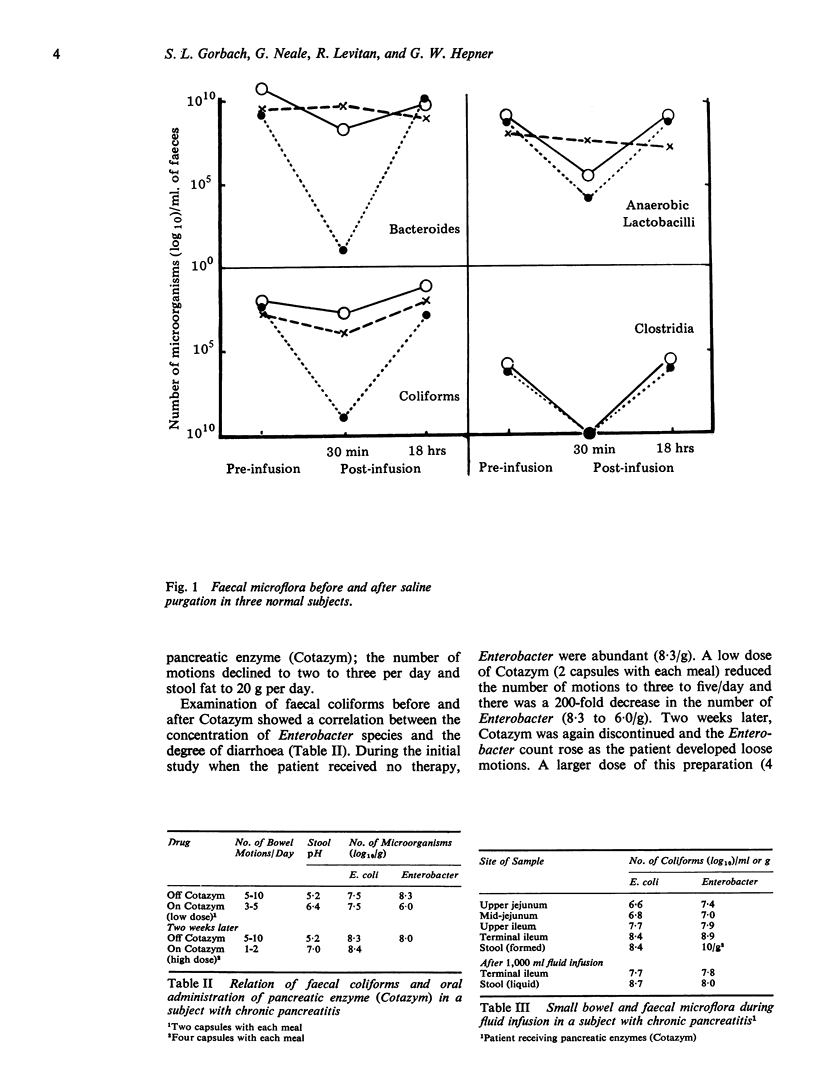
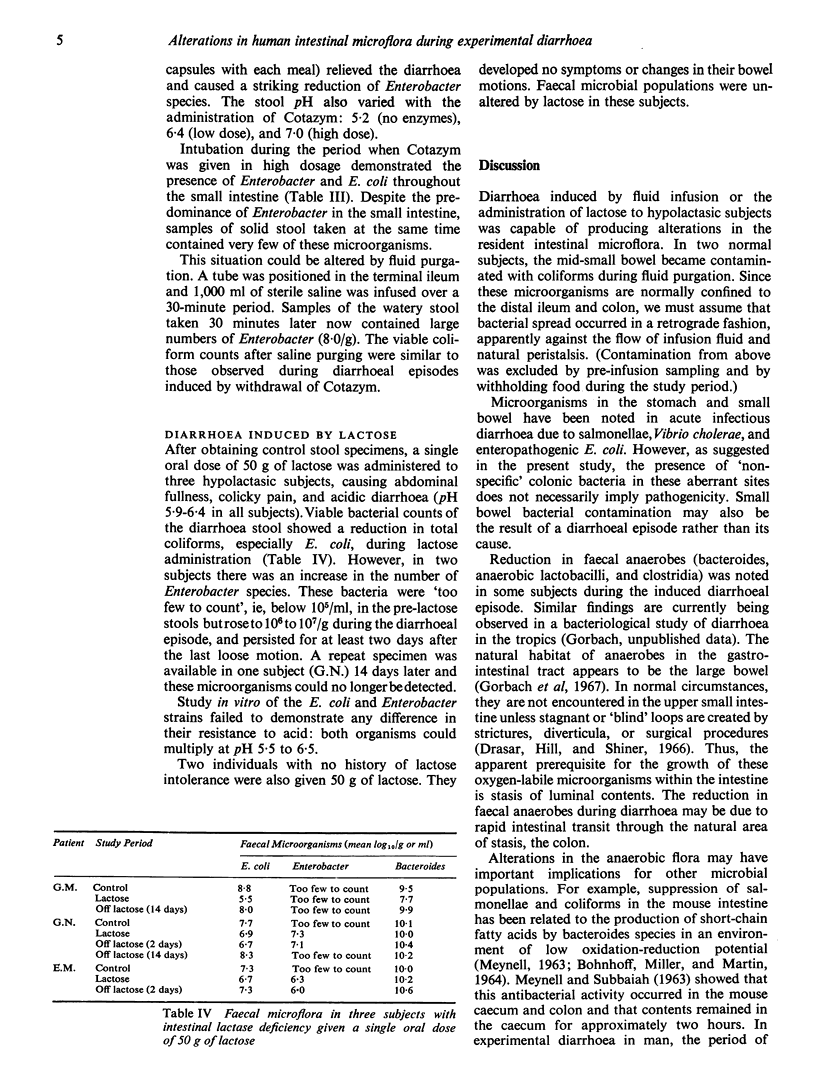
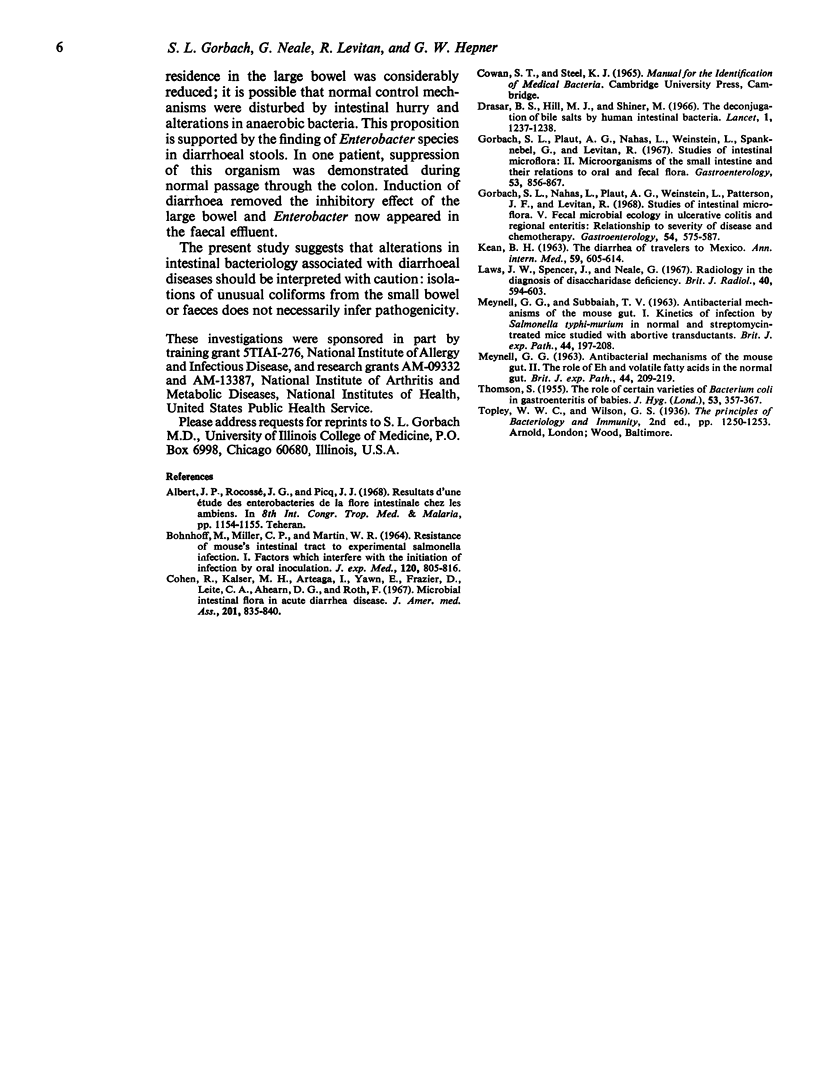
Selected References
These references are in PubMed. This may not be the complete list of references from this article.
- BOHNHOFF M., MILLER C. P., MARTIN W. R. RESISTANCE OF THE MOUSE'S INTESTINAL TRACT TO EXPERIMENTAL SALMONELLA INFECTION. I. FACTORS WHICH INTERFERE WITH THE INITIATION OF INFECTION BY ORAL INOCULATION. J Exp Med. 1964 Nov 1;120:805–816. doi: 10.1084/jem.120.5.805. [DOI] [PMC free article] [PubMed] [Google Scholar]
- Cohen R., Kalser M. H., Arteaga I., Yawn E., Frazier D., Leite C. A., Ahearn D. G., Roth F. Microbial intestinal flora in acute diarrheal disease. JAMA. 1967 Sep 11;201(11):835–840. [PubMed] [Google Scholar]
- Drasar B. S., Hill M. J., Shiner M. The deconjugation of bile salts by human intestinal bacteria. Lancet. 1966 Jun 4;1(7449):1237–1238. doi: 10.1016/s0140-6736(66)90242-x. [DOI] [PubMed] [Google Scholar]
- Gorbach S. L., Nahas L., Plaut A. G., Weinstein L., Patterson J. F., Levitan R. Studies of intestinal microflora. V. Fecal microbial ecology in ulcerative colitis and regional enteritis: relationship to severity of disease and chemotherapy. Gastroenterology. 1968 Apr;54(4):575–587. [PubMed] [Google Scholar]
- Gorbach S. L., Plaut A. G., Nahas L., Weinstein L., Spanknebel G., Levitan R. Studies of intestinal microflora. II. Microorganisms of the small intestine and their relations to oral and fecal flora. Gastroenterology. 1967 Dec;53(6):856–867. [PubMed] [Google Scholar]
- KEAN B. H. THE DIARRHEA OF TRAVELERS TO MEXICO. SUMMARY OF FIVE-YEAR STUDY. Ann Intern Med. 1963 Nov;59:605–614. doi: 10.7326/0003-4819-59-5-605. [DOI] [PubMed] [Google Scholar]
- Laws J. W., Spencer J., Neale G. Radiology in the diagnosis of disaccharidase deficiency. Br J Radiol. 1967 Aug;40(476):594–603. doi: 10.1259/0007-1285-40-476-594. [DOI] [PubMed] [Google Scholar]
- MEYNELL G. G. Antibacterial mechanisms of the mouse gut. II. The role of Eh and volatile fatty acids in the normal gut. Br J Exp Pathol. 1963 Apr;44:209–219. [PMC free article] [PubMed] [Google Scholar]
- MEYNELL G. G., SUBBAIAH T. V. Antibacterial mechanisms of the mouse gut. I. Kinetics of infection by Salmonella typhi-murium in normal and streptomycin-treated mice studied with abortive transductants. Br J Exp Pathol. 1963 Apr;44:197–208. [PMC free article] [PubMed] [Google Scholar]
- THOMSON S. The role of certain varieties of Bacterium coli in gastro-enteritis of babies. J Hyg (Lond) 1955 Sep;53(3):357–367. doi: 10.1017/s002217240000084x. [DOI] [PMC free article] [PubMed] [Google Scholar]


